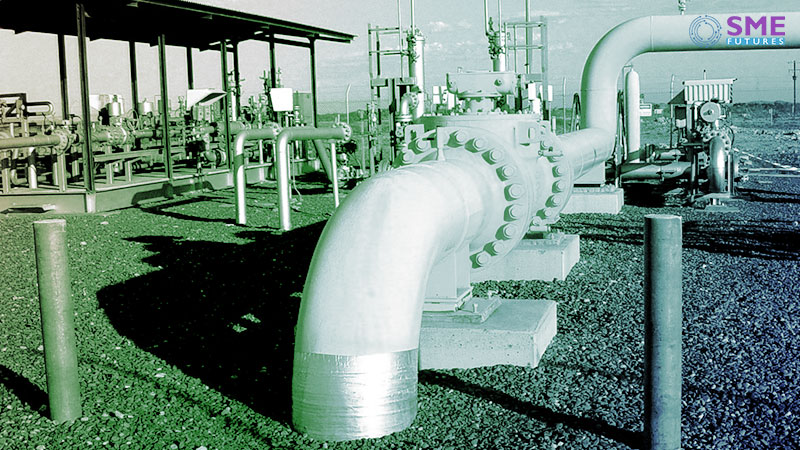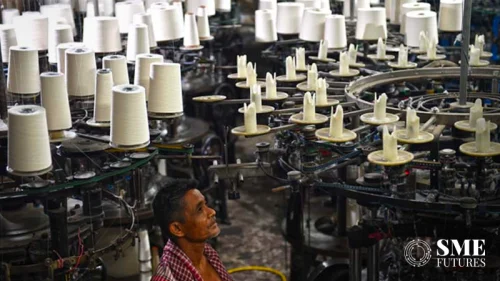When a ship carrying the liquefied natural gas from Russian state-owned energy major Gazprom docked at Petronet LNG’s import facility at Dahej off the coast of the Arabian Sea in Gujarat on 4, it marked another turning point in India’s energy security and a boost towards achieving a gas-based economy.
Oil minister Dharmendra Pradhan who termed it as a golden day in India’s energy roadmap. “First we renegotiated the price of LNG from Qatar, then reworked Australian supplies and now gas from Russia under renegotiated terms have started to flow,” he said. India will import LNG worth an estimated USD 25 billion over 20 years from Russia. The LNG consignment from Russia came weeks after a consignment of shale gas came for the first time from the United States. Last year also saw India getting a small quantity of crude oil from the US.
India is pushing towards a gas-based economy by raising the share of the environment-friendly fuel in the energy basket to 15 per cent from current 6.2 per cent. There is immense scope for use of gas in the Indian economy in a range of areas- from generating power to producing quality steel.
Also read: Local sportswear brands hold hard against global majors, but R&D gaps hinder growth
Enhancing the share of gas would also help India meet its target of cutting down greenhouse gas emission from petrol, diesel and kerosene under the global climate deal of 2015 commitment. An economically-growing India, the third largest energy consumer and four biggest LNG importer in the world, is dependent on imports to meet 45 per cent of its gas needs.
Till two years ago, India sourced LNG only from Qatar but that has since expanded to the US, Australia and now Russia. Keeping the pursuit of gas-based economy in mind, India has invested heavily in creating LNG import facilities and pipelines to supply the gas across the country to cater to supply of piped cooking gas and for powering vehicles The availability of gas will also be crucial for the government plans to provide free cooking gas connections to 80 million poor families under Prime Minister Narendra Modi’s pet social sector welfare programme—the Pradhan Mantri Ujjwala Yojana.
This apart, India’s gas demand is expected to be driven by requirements of the fertiliser, power and steel sectors. Gas Authority of India Limited (GAIL) is also working on a national gas grid that is aimed at connecting the under-served eastern part of the country to the rest of the nation and LNG will play a key role here.
Domestic production of gas is far from meeting the demand and India will remain dependent on LNG import as the government plans to increase the share of natural gas in the country’s energy profile from 6.5 per cent at present to 15 per cent by the next decade. It was six years ago that India’s GAIL signed a long-term (20 years) deal with Gazprom for buying 2.5 billion tonnes of gas a year. India has also contracted for acquiring 5.8 million tonnes of gas from the US every year also under a long-term agreement. Of all the countries, Russia offered the most competitive rates for the LNG.
The import of LNG from Russia is seen as India’s bid address Moscow’s concern over India’s growing proximity with the US in matters of energy and defence hardware purchase in the last four years. Given the fact that diversification of options is the name of the game in international diplomacy, this is but natural. Indian companies have invested $10 billion for picking up stakes in hydrocarbon assets in Russia. Also, a consortium led by Russia’s Rosneft PJSC acquired Essar Oil Ltd for nearly $13 billion.
The LNG imports from Russia is expected to contribute to India’s efforts to take care of uncertainties of supplies from the strife-torn Middle East and Iran threatened by the US sanctions following the Donald Trump administration’s withdrawal from the international nuclear deal with Tehran. As sanctions on Iran go into force, India may have to scale down its purchase from Iran because of the complications of payment as few international banks will dare to violate the US punitive measures. Increasing cooperation between OPEC and Russia to control oil supplies and falling production in Venezuela have added to the prevailing uncertainty in international energy price.
India has been seeking to take advantage of the glut in global LNG supplies to renegotiate its contracts and get a competitive price in what is now a buyers’market. The competition is expected to further hot up when countries like Mozambique, Tanzania, Egypt, Israel, Canada and Cyprus enter the LNG market. India imported 19 million metric tonnes of LNG in 2016-17. India has also renegotiated long-term LNG deals with Qatar’s RasGas and Exxon Mobil Corp. Securing energy supplies is key to ensuring a country’s military security and by scouring for all sources of gas and crude India is on the right track.
(PTI)











